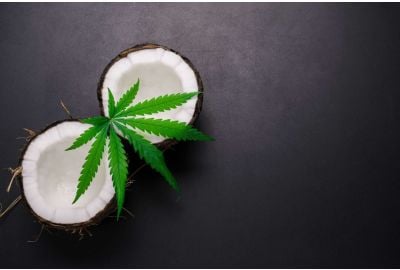Watering Weed: A Beginner's Guide with Kyle Kushman
Learn the art of watering weed plants and you’ll avoid many of the problems that can ruin a good crop. This is especially important for beginners!
The trick is knowing when to water, how much to give, how to avoid drowning your plants or drying them out. It’s not as simple as constant feeding. Over watering weed plants can be just as destructive as letting them dry.
This article will cover all the basics of watering weed, from pot sizes to cycling wet-to-dry, to flushing your plants at the end of flowering. We’ll give you weed watering tips from experts like Kyle Kushman, and we’ll show you how important watering is to growing strong, healthy cannabis plants.
How do you know when to water cannabis plants?
Any watering schedule for weed will depend on the medium, the climate, the strain, and your setup. Some soils drain quicker than others, some lamps are hotter, some plants are thirstier. Every grow is different.
The best way of watering weed plants is to cycle wet to (almost) dry. As the moisture recedes, the roots expand, searching for water. This makes for a healthy, solid root ball and a stronger, sturdier plant.
When the soil is dry to a depth of a few inches (don’t be shy, stick your finger in) it’s time to water again. This is usually around 2 - 3 days after watering, but every grow is unique so DO NOT take this as a hard and fast rule.
Once you have a few indoor grows under your belt, you’ll be able to judge when to water your weed plants by picking up and weighing the container.
We’re often asked about weed and feed watering, but there’s no one-size-fits-all answer. Your nutrients will have a particular feeding schedule to follow, unique to the brand or product. Follow it as best you can.
Are you looking for nutrients? Your Homegrown seeds should be grown with Homegrown nutrients. Our breeders use them, so should you.
Tip: Keep a record when feeding and watering, watch how your plants react, make a note of positive and negative reactions and use this information to make improvements.
Watering weed: how much water do marijuana plants need?
One major aspect of watering weed is knowing exactly how much water to give your plants. Indoors, this mainly depends on the size of the pot and the substrate (type of soil). Watering outdoor weed plants depends more on natural drainage, weather and climate.
Tip: If you’re using water-based nutes, make sure you water enough to get 10 - 20% extra run-off from the bottom of the pots.
Plant container
Pot size is hugely important when watering weed plants. It can affect the balance between moisture drainage and retention, determining whether your crops go thirsty or drown.
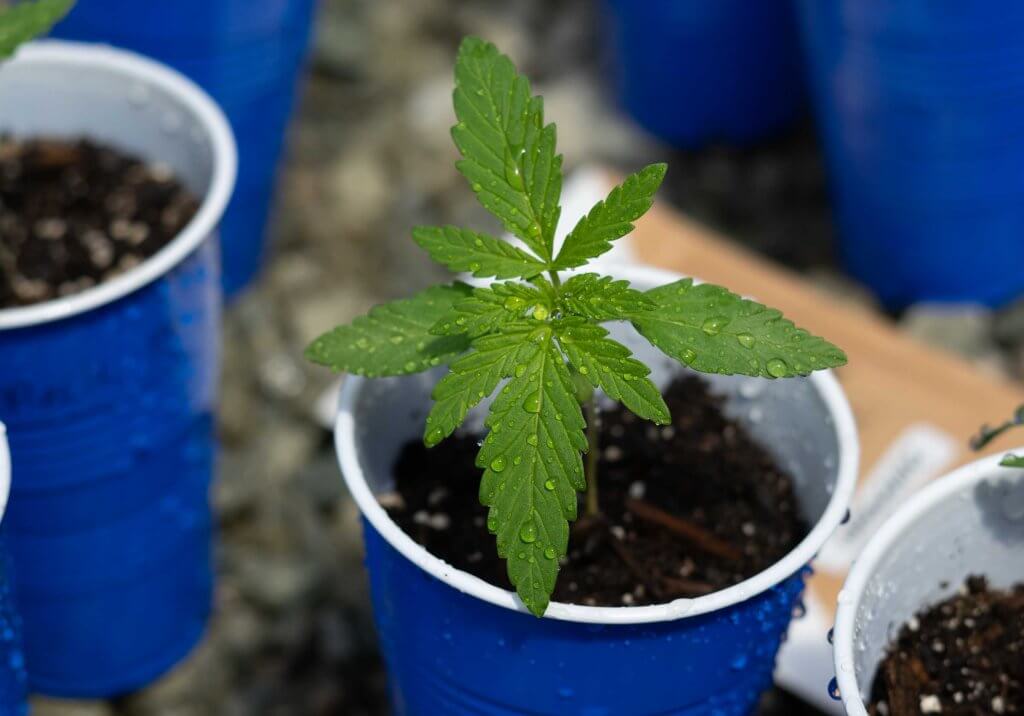
As your plants grow, you’ll move your seedlings from smaller to larger pots. If you can’t progressively transplant like this, you’ll need to take steps to mitigate potential issues.
- Water more frequently in pots that are too small (they’ll dry more quickly).
- For pots that are too large, try to focus the waterings around the central stem, keeping a dry boundary at the outer edges.
For plants in perfect-sized pots, you should saturate fully. Check our article about "autoflower pot size" to know the best fit for autoflowers and water properly.
Growing Media
Many indoor weed gardeners use soil-based media, which makes watering weed an essential skill to master, but not all soil is the same.
Those growing weed in coco coir, for example, may need to use more water than those growing in living soil. Coco is firmer and it can be more difficult for the water to get to the roots.
Temperature
Indoor growing has advantages over outdoor. You get complete control over the conditions, which makes it easy to provide the ideal light, humidity, and temperature for growing weed.
Why does temperature matter? Warmer conditions will see plants lose moisture more quickly, increasing the frequency of waterings. What you can control indoor, you have to monitor outdoor.
Again, keep records, keep an eye on the weather and be ready to react. Use common sense - it’s unlikely your plants will need watering after a heavy rainfall!
Stage of growth
Watering weed plants that are 2 days old is different to watering huge, fully-flowering weed plants. Fortunately, we have experts on hand to break it all down for you.
Don’t have time to listen? Here’s the basics…
- A light misting several times a day for seedlings.
- A gallon every three to five days for young, vegging plants.
- Two gallons every three to five days for crops in late vegetative growth.
- Slowly reduce the amounts when the flowering stage begins.
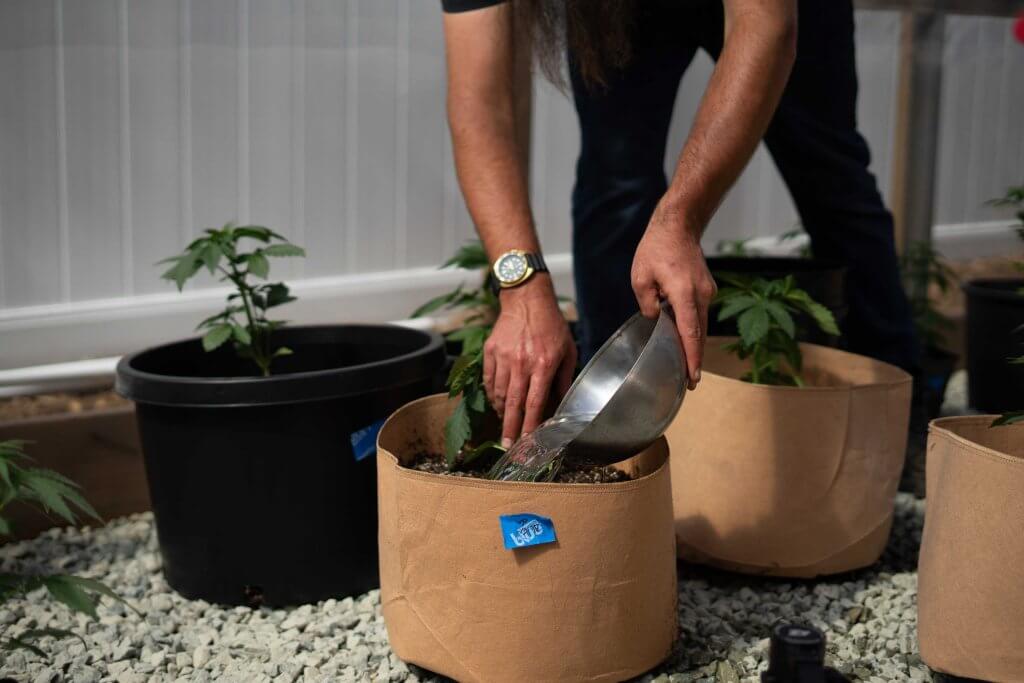
Tips on how to water weed plants
- Quality over frequency. Watering weed is best when employing a wet-dry cycle — treat your plants to healthy, less frequent drenching.
- Hit the middle first. Give the root system enough time to drink before hitting the edges.
- Remove the run-off. That murky liquid in the runoff tray is an ideal breeding location for mold and rot.
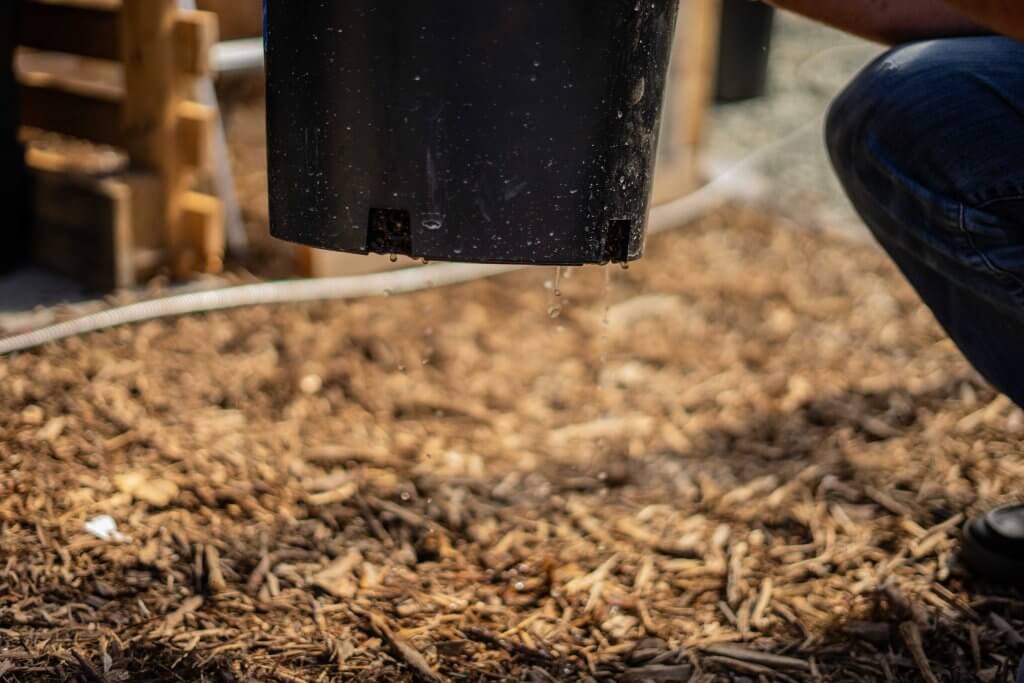
How to flush weed plants
Flushing cannabis means purging your soil of nutrients, allowing the plants to use up the nutes they’ve already absorbed. This makes for better flavors and aromas in your harvested buds, but can also reverse the effects of over-feeding.

There are two primary reasons for flushing:
1. Nutrient imbalance
An overabundance of nutrients and improper pH levels can stress your marijuana plants. By flushing, you remove the excess buildup and restore the pH balance, promoting healthy growth.
How? You need to repeatedly water the pots with pH-neutral water. Repeat until your pH and PPM levels return to acceptable levels, then resume your normal schedule.
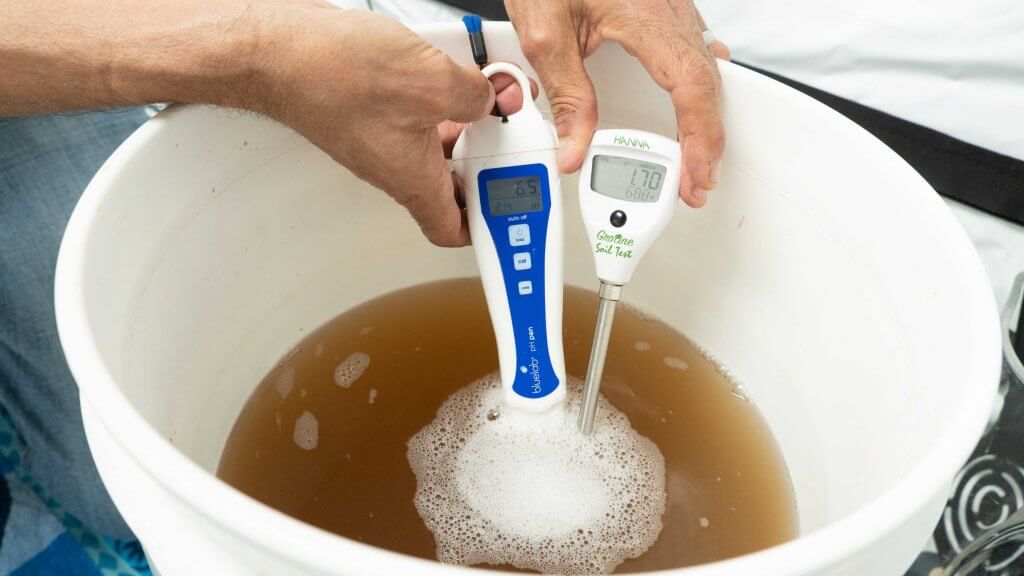
2. Ahead of harvest
Most growers like to perform a final flush before harvest, to improve the quality of the buds, but flushing timeframes differ depending on your growing medium. As a rule, you should flush…
- A week to ten days before harvest for soil.
- A week before harvest for coco coir and rockwool.
- Five days to a week before harvest for hydro.
Tip: Use three times the capacity of your container of pH-adjusted water for soil flushing. In soilless media, all you need to do is change your reservoirs.
Best water for your plants
Watering weed with the correct type of water makes a huge difference to your crop. As well as pH, the amount of dissolved solids in water (measured in parts per million, or ppm) can cause issues you’d much rather avoid.
Tip: Always check the ppm levels of your water, with a particular focus on biological and chemical contaminants.
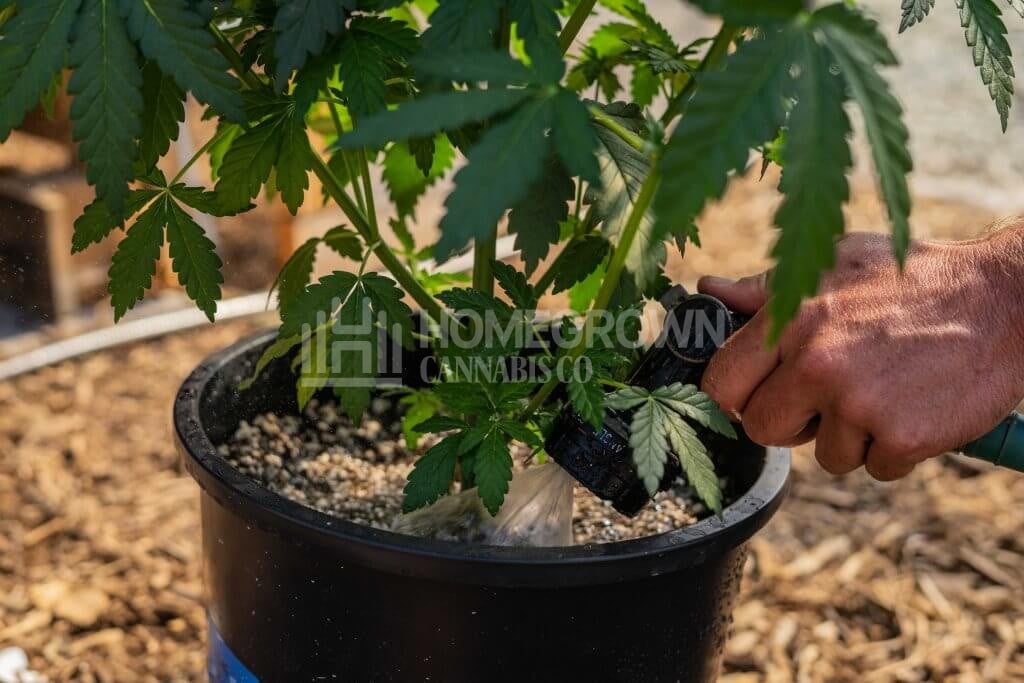
Unfiltered tap water
Despite some growers’ claims, tap water can be used to grow cannabis, as long as you live in a municipality with good water treatment protocols.
Pros:
- Affordability. Tap water is CHEAP!
- Ease of access. Taps are handily placed around the home and garden.
- Low-effort. Using tap water is as easy as letting it run and filling your bucket.
Cons:
- Potential pH imbalance. If the pH is off, tap water can harm your cannabis plants and lead to nutrient lockout.
- Potential ppm issues. Large cities tend to have ‘hard water’ that could cause nutrient toxicity. Always check!
Bottled water
This source is pure, accessible, and guaranteed to be uncontaminated. It’s a great (if costly) solution for small gardens and growers worried about the pH of their tap water.
Pros:
- Safe. Manufacturers have to abide by sets of standards for their products, which guarantees quality water for your plants.
- Easy. This one is second only to tap water in terms of accessibility.
Cons:
- Environmentally harmful. Bottled water comes in plastic containers. One growing season ends up producing a lot of waste.
- Cost. The cost of bottled water is far higher than tap.
- PPM. Some bottled waters contain very high mineral levels.
Water collection systems
Eco-friendly cultivators love rainwater and gray water collection systems for watering weed. They work especially well in areas where water-saving is encouraged.
Pros:
- Environment. There’s no better way to do your part in helping the planet than using rain water.
- Cost. Once you set up the system, watering weed will cost you nothing.
- Low-maintenance. The sustainability aspect also makes these systems easy, letting you reuse water hassle-free.
Cons:
- Starting capital. Rain barrels and faucets aren’t extortionate, but some purchases are unavoidable and costly.
- Gray water needs filtering. Especially if your toiletries are full of chemicals.
Reverse osmosis systems
Reverse Osmosis (RO) systems can deliver an almost unlimited clean water supply for watering weed, and they’re loved by expert growers like Kyle Kushman.
Pros:
- Purity guaranteed. Think bottled water, but on a large scale and much more affordable.
- Suitable for large gardens. You’re limited only by how much you can take from the tap.
Cons:
- Initial investment. Even the most basic systems can be costly.
- Not eco-friendly. ROs can lead to unnecessary waste.
Common watering issues: signs and solutions
Watering issues are easy to solve with a bit of know-how.
Over watering weed plants
Eager newbies have been known to spend every last minute watering weed, desperate to keep their plants from drying out. Overwatering weed plants is avoidable! Look out for…
- Drooping, wilting leaves.
- Top foliage yellowing.
- Brown leaf edges.
- Cupping and curling.
Always let the soil (almost) dry before you water again!
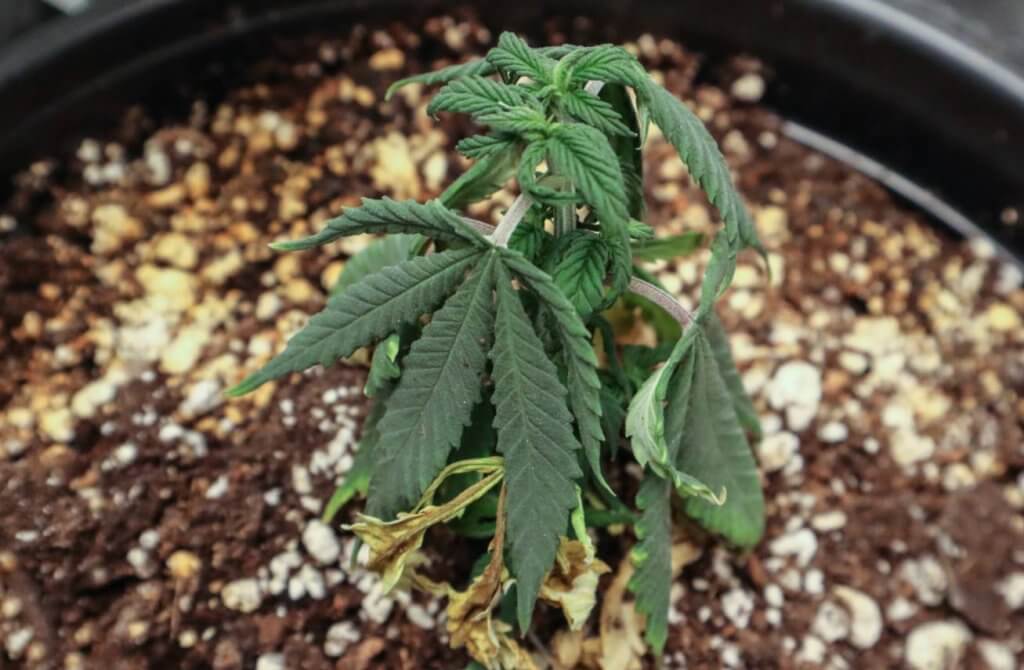
Under watering cannabis plants
Underwatering weed is just as avoidable, look out for…
- Papery thin leaves.
- Drooping.
- Overall yellowing.
- Limpness and lifelessness.
Regularly check the soil and keep an eye out for adverse effects. Do not let your plants dry out!
pH problems
The pH levels in organic soil are usually well-balanced and optimized for growth. If you’re using mineral-based nute solutions, or if you’re growing in coco or hydro, you’ll need to be extra vigilant.
Aim for:
- 6.3 - 6.8 for soil.
- 5.5 - 6.1 for coco and hydro.
Bad drainage
Signs of bad drainage include:
- Pools on top of the soil.
- Pot stays wet and heavy for far too long.
- Bad smell, signs of over watering.
How can you resolve drainage issues?
- Make sure the drainage holes are clear.
- Add perlite to aerate the soil.
- Water more frequently, using less water per watering.
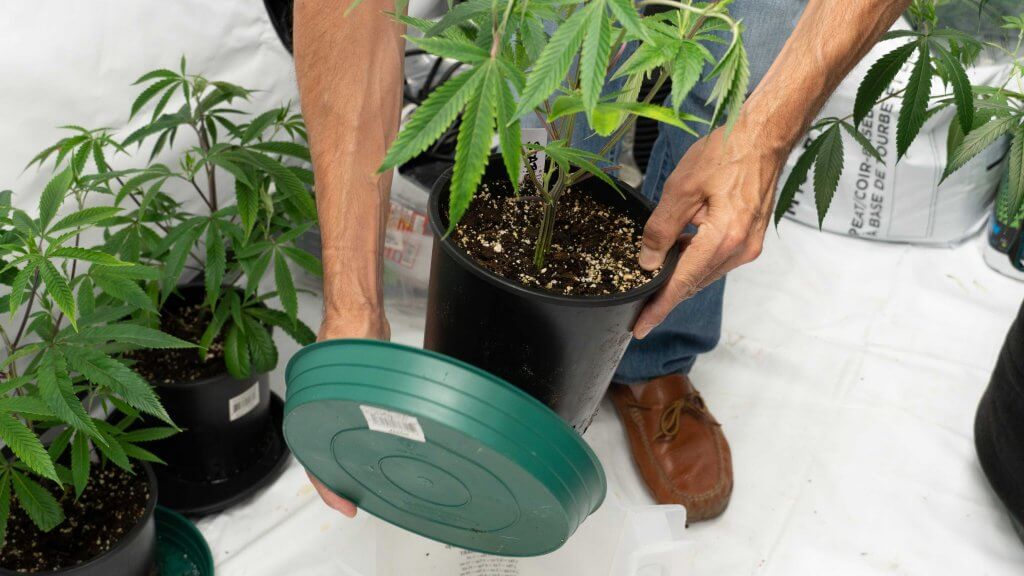
How to water cannabis plants if you are away?
Watering weed is a commitment that can’t be avoided, even if you’re on the holiday of a lifetime. The best auto watering system for weed can include homemade rigs as well as shop-bought systems. Our favorite solutions include:
- Makeshift bottle drips. Drill holes in a bottle cap and place it in your container, cap-side down.
- Plastic bag greenhouses. Get a large, clear plastic bag and a support structure (plastic polls or bamboo will do). Place it over a soaked pot to form condensation.
- Irrigation systems. Timer-controlled, on-demand systems are a cultivator’s best friend and a fantastic option for those cultivating away from home.
- Smart drip setups. These are a more advanced version of the bottle trick. They have smart timers to make sure your weed is watered and happy at all times
Mastering the basics
This guide for watering weed should have given you the tools and knowledge to know when and how to water your own plants, according to your set up. We mostly focused on soil-based cultivation, but you can visit the Homegrown Forum to find specific advice for hydro and other advanced setups.
Uploading your journal to Homegrown Diaries should deliver some practical assistance, too.
The basics are simple: cycle wet to dry, keep records, observe your plants.
Let us know how it goes!!!
About the author: Kyle Kushman
13 times Cannabis Cups winner. Kyle Kushman is a master breeder and indoor growing expert, a leading voice in the fight for legalisation and education, especially when it comes to growing cannabis at home. He’s been teaching and spreading the word for over 30 years, maintaining a consistently high level of achievement throughout his entire career.

